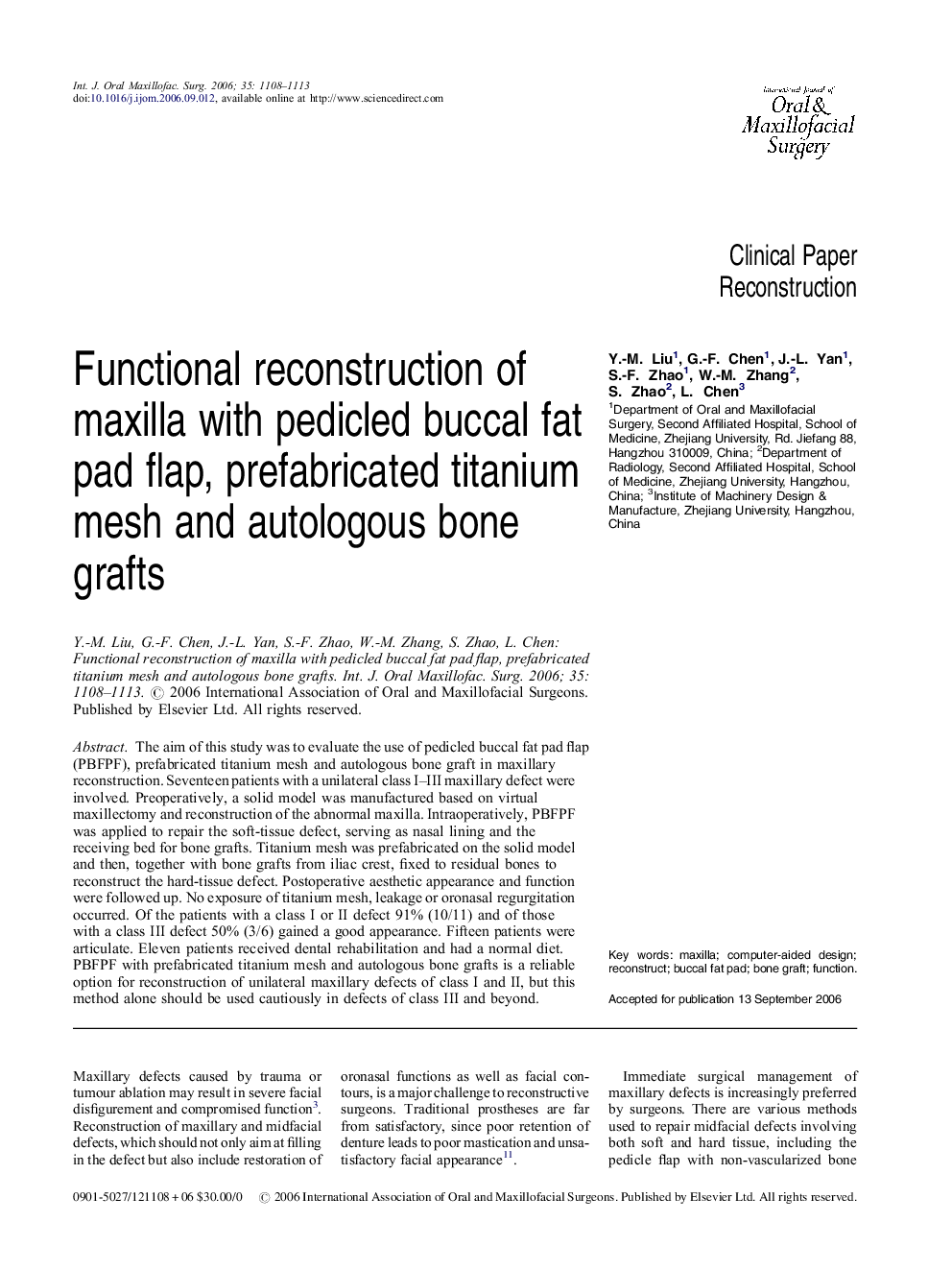| Article ID | Journal | Published Year | Pages | File Type |
|---|---|---|---|---|
| 3134934 | International Journal of Oral and Maxillofacial Surgery | 2006 | 6 Pages |
The aim of this study was to evaluate the use of pedicled buccal fat pad flap (PBFPF), prefabricated titanium mesh and autologous bone graft in maxillary reconstruction. Seventeen patients with a unilateral class I–III maxillary defect were involved. Preoperatively, a solid model was manufactured based on virtual maxillectomy and reconstruction of the abnormal maxilla. Intraoperatively, PBFPF was applied to repair the soft-tissue defect, serving as nasal lining and the receiving bed for bone grafts. Titanium mesh was prefabricated on the solid model and then, together with bone grafts from iliac crest, fixed to residual bones to reconstruct the hard-tissue defect. Postoperative aesthetic appearance and function were followed up. No exposure of titanium mesh, leakage or oronasal regurgitation occurred. Of the patients with a class I or II defect 91% (10/11) and of those with a class III defect 50% (3/6) gained a good appearance. Fifteen patients were articulate. Eleven patients received dental rehabilitation and had a normal diet. PBFPF with prefabricated titanium mesh and autologous bone grafts is a reliable option for reconstruction of unilateral maxillary defects of class I and II, but this method alone should be used cautiously in defects of class III and beyond.
